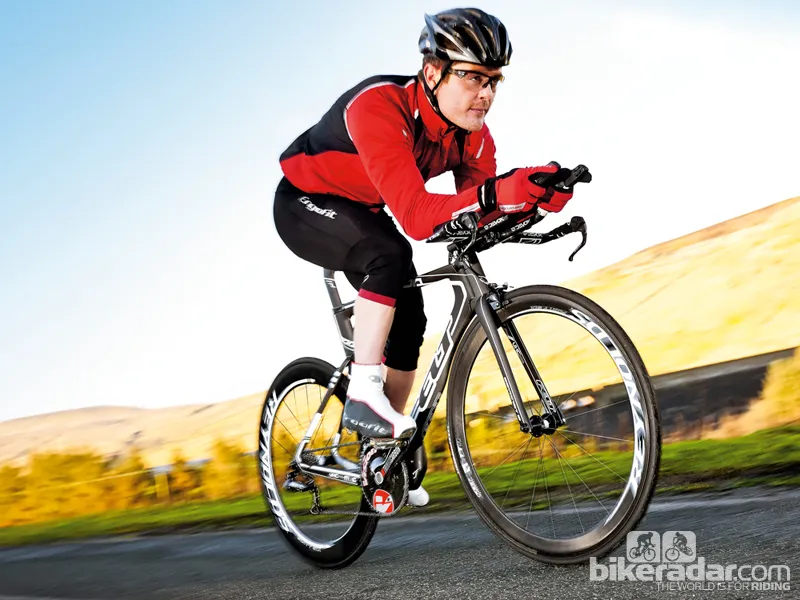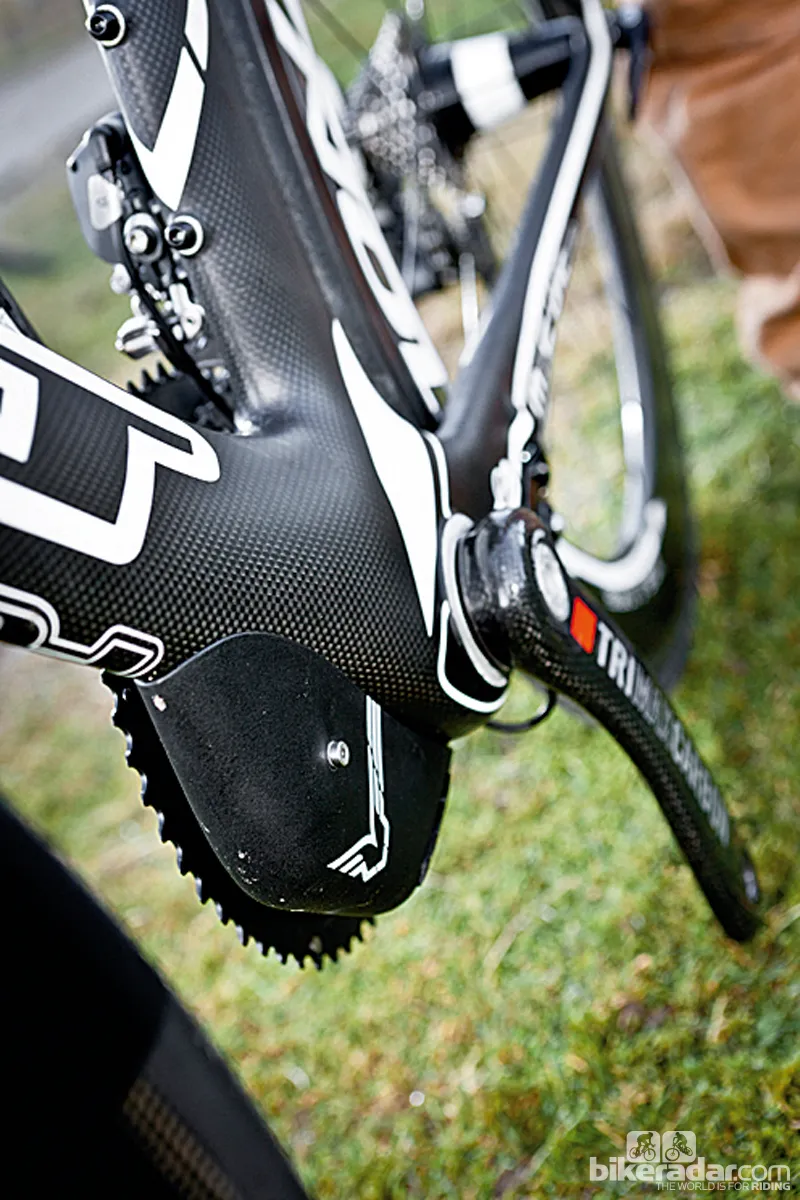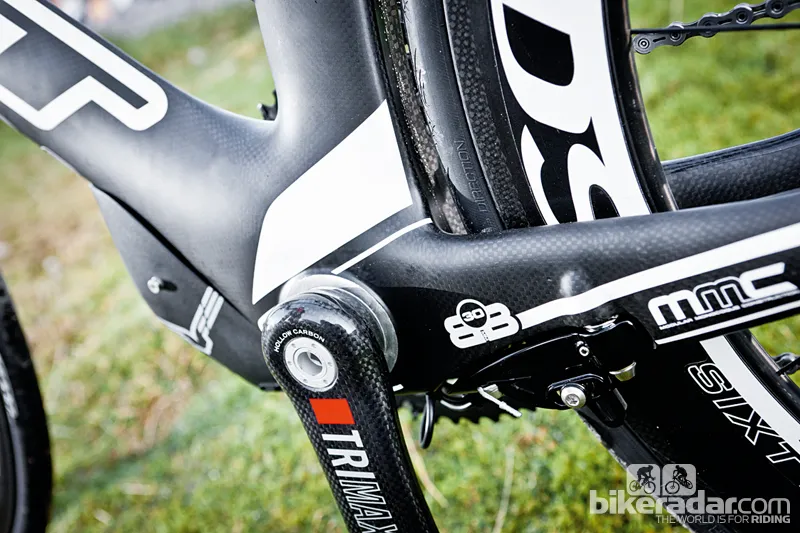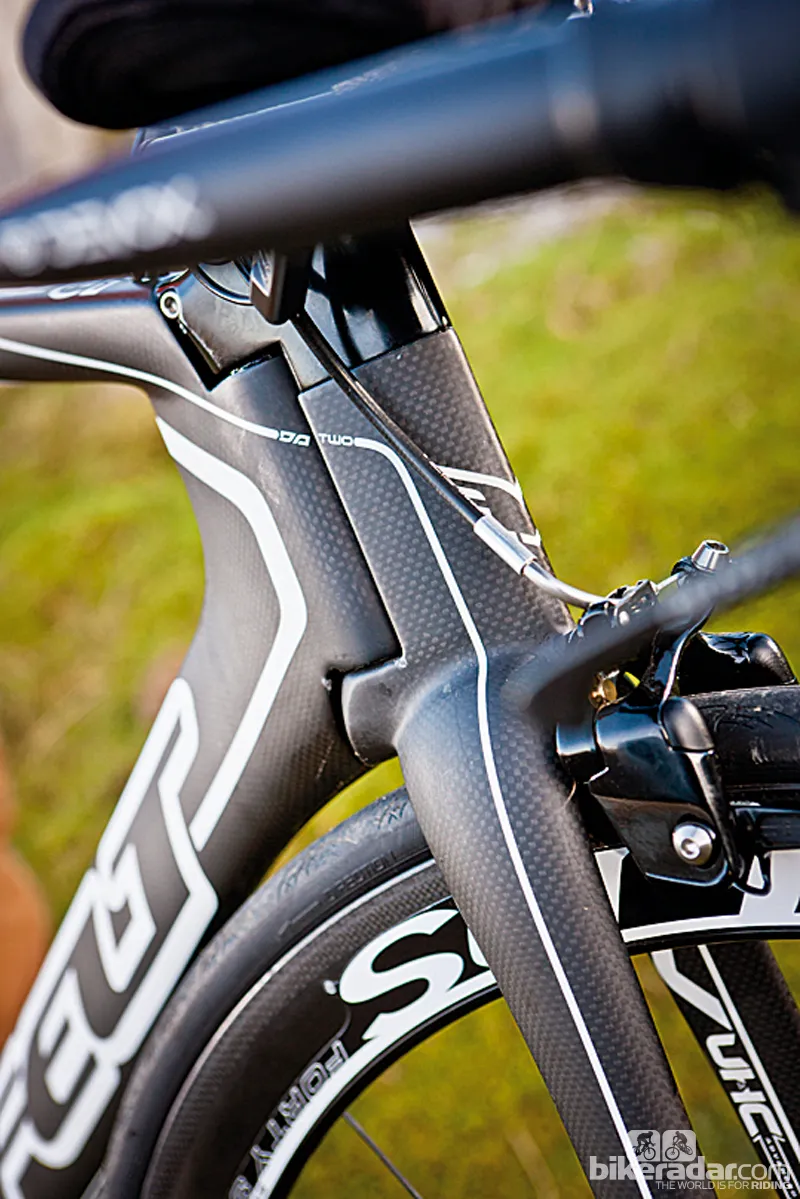Felt's multi-adjustable, impressively comfortable, early digital-shift-adopting DA2 is one of our favourite aero bikes of recent years. A strong specification list and impressive straight line speed mean it's still a contender but frame flex lets it down in the corners compared to the latest flashy chassis kits.
Ride & handling: Skinny tubes make it a bike of two halves when you start to push hard
When it comes to ride quality, Felt's aero bikes have always had a great reputation for smooth, efficient, energy-saving long-haul performance – and the DA2 is no exception to that. Get yourself settled into the waffle padded arm rests, find a comfy grip on the chicane extensions and you’re away.
Keep that big carbon chainring turning smoothly and there’s very little vibration or other road related abuse through your shorts or your shoulders. The electronic Di2 shifting is a simply sublime experience too, letting you change from extensions or base-bar shifting at the optimum moment in the sprocket pattern and with automatic front mech correction for silky smoothness.
While the ergonomics and electronics make the Felt a phenomenal cruiser, some chinks in the DA2 dynamic are revealed when you start to push hard. The BB30 bottom bracket and sturdy stays transmit power to the rear wheel well enough, but the cone-shaped hub means there's little transmission of torque to the offside, placing a high load through a few driveside spokes with noticeable wind-up and softness as a result.
The narrow-stance front hub also reduces tracking accuracy and handling precision, and the Reynolds rims aren’t as gust/side-wind proof as the latest fattened toroidal rims from other brands. To double check we slotted in our default Zipp 404 Firecrest wheels and the result was quite dramatic: immediately the ride was sharper through both the pedals and the steering.
Whichever wheels we used, the skinny top tube, thin down tube, drainpipe fork legs and adjustable stem created a noticeably ‘articulated’ feel to the front and rear halves. This frame flex is particularly obvious when working hard out of the saddle or cornering fast, and it can easily catch you out with a real flop or flutter if you’re not really careful.
Frame & equipment: Very comfortable, easily adjustable, aerodynamic chassis
It's now been superseded at the top of the Felt arsenal by the more angular DA1, but the DA2 still has plenty of well-proven aero speed DNA. One of the pioneers of the leading edge idea, Felt’s slender-legged Bayonet fork is now a very neat and low integrated unit, topped with an angle adjustable, Allen-key secured stem.
This makes custom tuning for a low or high position very easy compared with the shim stack systems of other integrated front end machines. It also lets Felt use a very low and efficient base bar/bar pad design for their in-house Devox carbon cockpit. The narrow head blends back into an equally slim but deep down tube, with a curved wheelhugger cutout for the front wheel and a gradual swell towards the bulbous BB30 bottom bracket.
Felt were one of the first companies to produce a Di2-compatible aero frame, with the battery tucked into the rounded keel ahead of the bottom bracket, which is a great spot for reducing drag ahead of the turbulent chainset area. However, the plastic shroud isn’t the neatest fit and, while the Di2 battery is fully sealed, you’re likely to get some water running into it when it’s wet.
The top tube is super-slim, which has both positive and negative impacts on the ride, particularly where it meets the top level notch where the sleek seat clamp sits. The slim aero seat tube also gets a wheelhugger cutout complete with trailing edge lips to kick the airflow out around the tyre – an obvious contrast to many less-well-thought out aero frames, where the seat tube actually tapers in to suck more air onto the turning turbulence of the tyre face.
Short, almost flat-section seatstays then extend back from the deepest part of the seat tube, and the DA2 uses a neat linear-pull brake tucked behind the bottom bracket to reduce drag underneath. Behind this the deep chainstays taper towards horizontal dropout slots, although careful and firm quick-release clamping is vital as there are no screw adjusters to stop the wheel slipping.
The wheels use Reynolds AWS 46/66 carbon clincher rims on proprietary Felt hubs. The front gets a super-narrow stance to show as little spoke to the wind as possible, while the rear is an eye-catching cone design. The transmission uses a suite of Shimano Dura-Ace Di2 with base bar and extension shifters, driven by FSA’s deep-armed, carbon platter chainring, BB30 axle and Tri Max chainset. The front U-brake and rear linear-pull brake provide reliable stopping through the angular Dura-Ace levers. Felt’s own Devox cockpit is a nice piece too, and the fat nosed saddle caused no complaints.
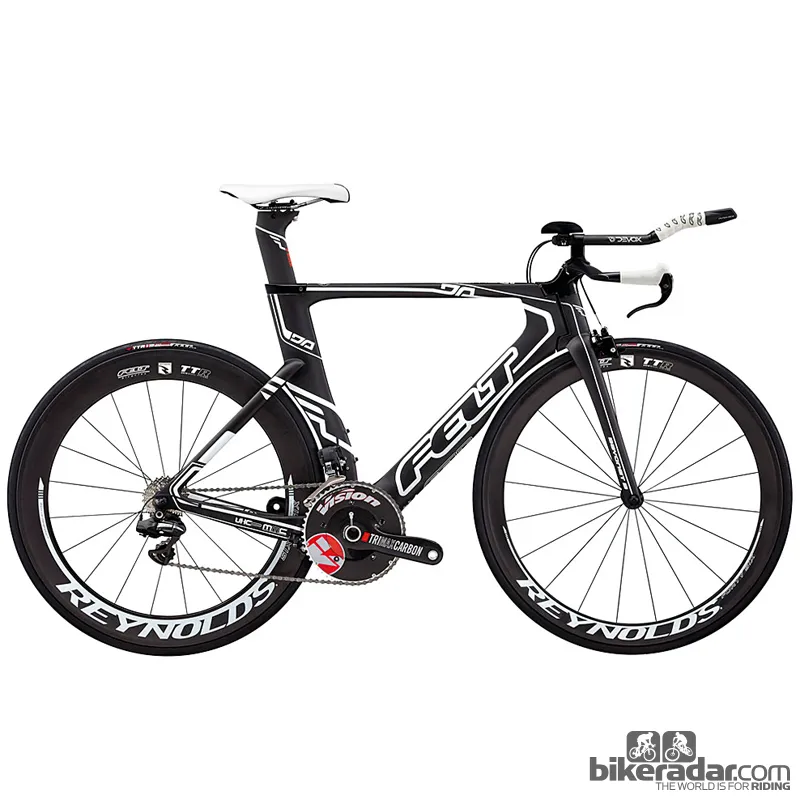
This article was originally published in Triathlon Plus magazine.
